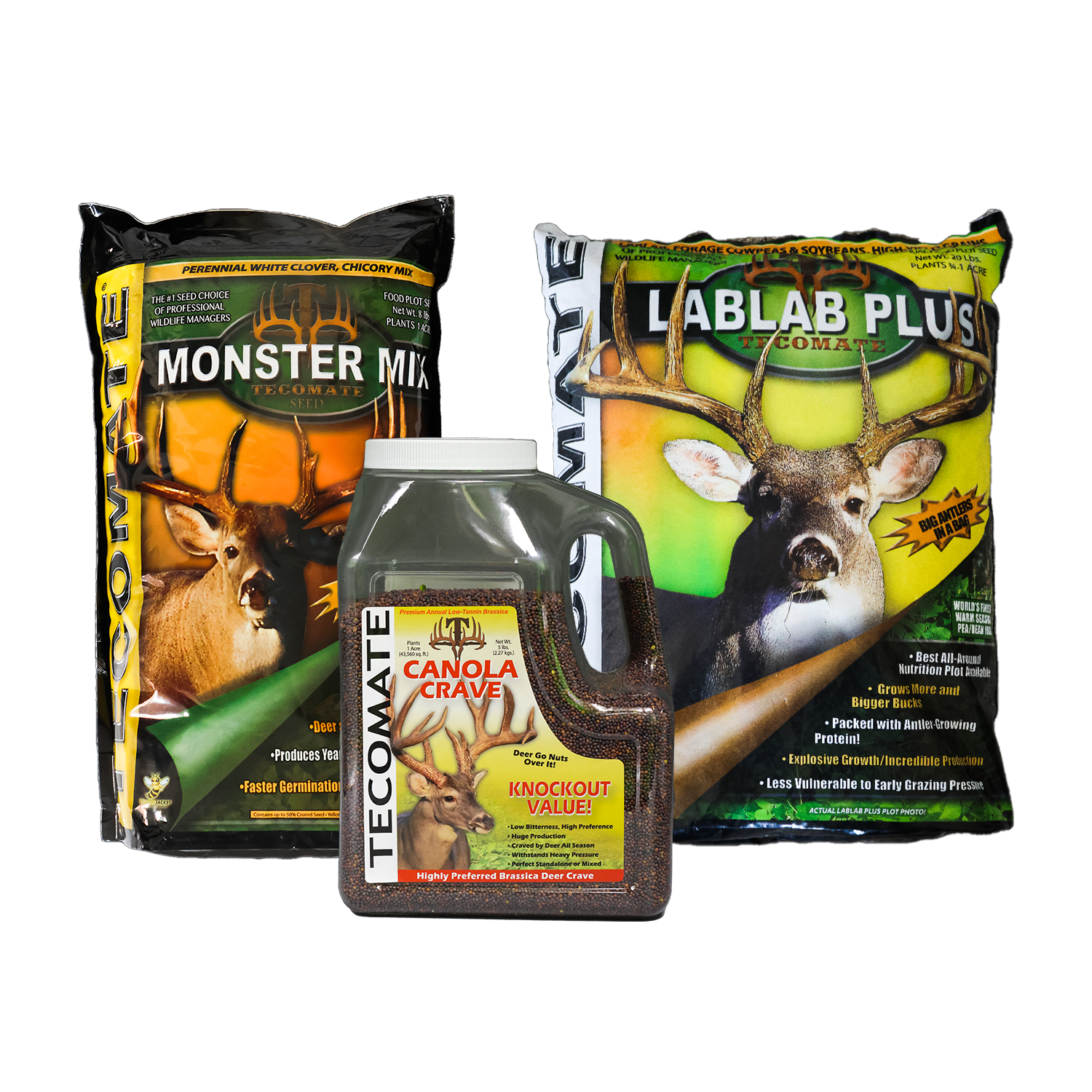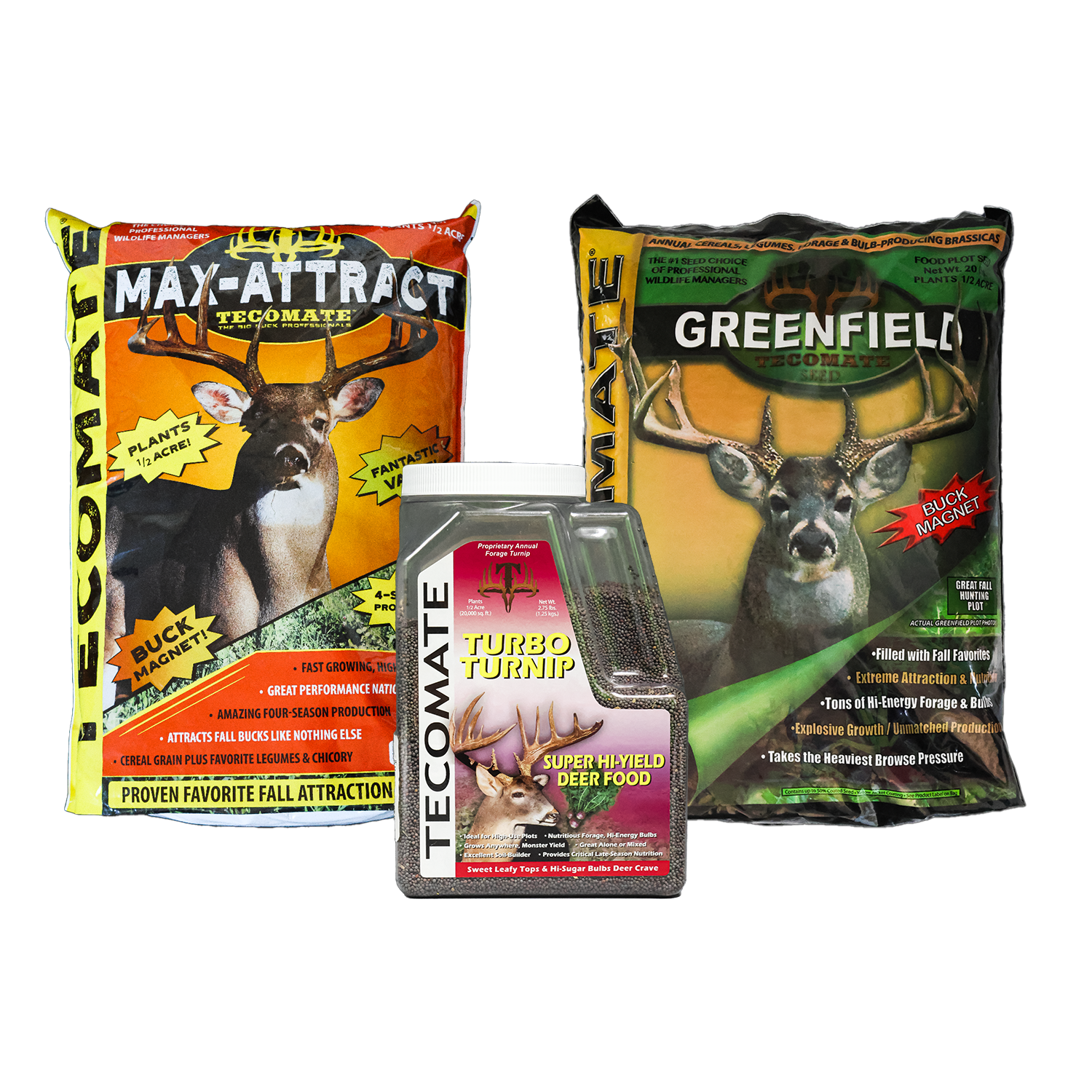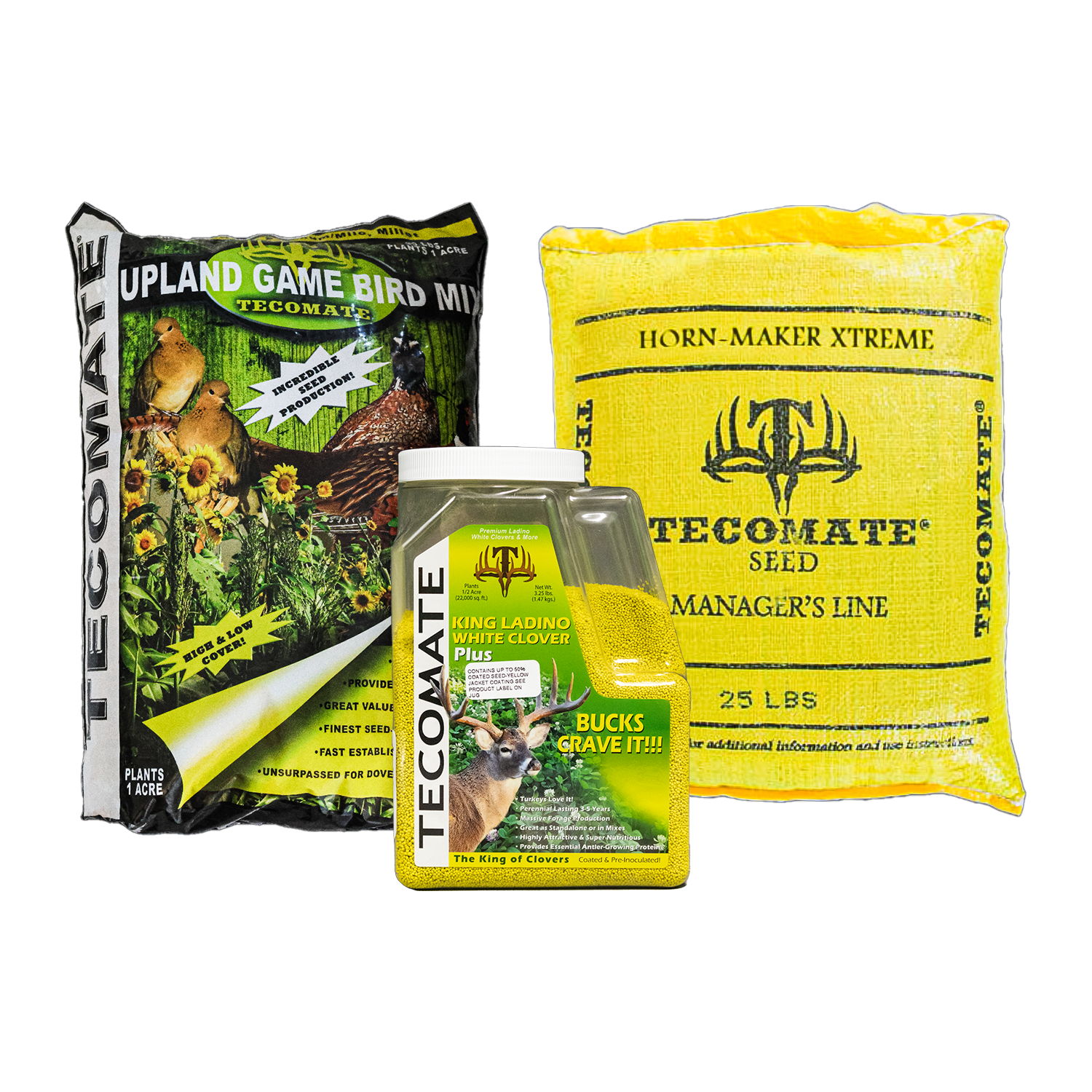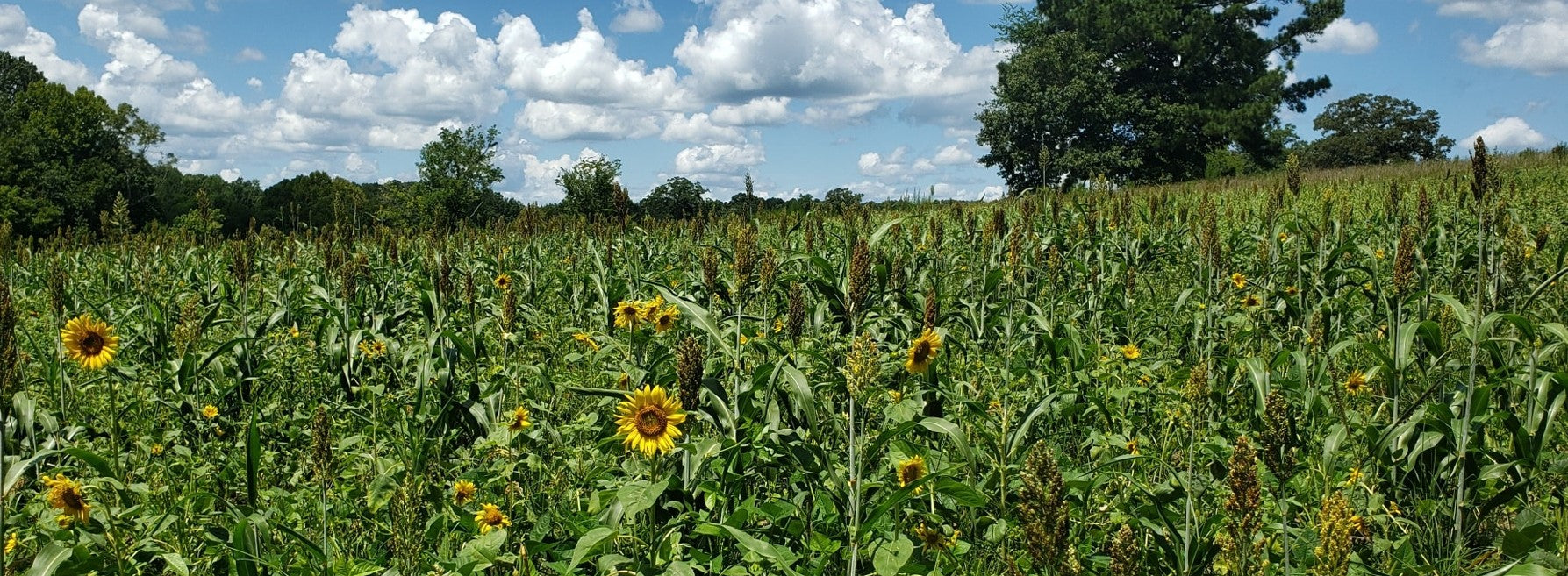WHERE ARE YOUR ODDS BEST FOR KILLING A BOONE & CROCKETT BUCK?
We had just rounded a curve on the ranch road when we noticed, at the same time, a huge-framed buck crossing a prickly pear flat only 50 yards from our truck. I slammed on the brakes and we both scrambled for the binoculars. The big buck didn’t miss a step and continued walking, almost nonchalantly, at an angle away from us. We watched the buck walk the entire 150 yards to the brush line on the other side of the pear flat. He was even cooperative enough to turn and allow us to view his rack from all angles - too bad it was February!
The buck was a typical 12-point with extremely long main beams, good mass, and at least a 25-inch spread. The tine lengths were also exceptionally long and well balanced from side to side, with the exception of the third tine on the right side, which was broken off only an inch or so above the beam.
This buck no doubt would have measured high enough to qualify for the Boone and Crockett Club records book at some point earlier in the fall before the third tine was broken. Unfortunately, neither the ranch owner, nor any of his guests ever saw the buck during the hunting season.
I later hunted for his shed antlers at every opportunity during the remainder of the winter and spring, but never found either side. However, the sight of the majestic buck remains frozen in my memory. And I considered myself very fortunate to have the opportunity to see such a large buck on the hoof.
Ever since that fateful day, I have tried to learn as much as possible about record book whitetails. I knew that if I were ever going to tag a monster B&C whitetail, I had to hunt areas which had the potential to produce these bucks. In order to determine these areas, I bought records books published by the Boone and Crockett Club
After sorting through the books, I learned that 198 Texas whitetails have been officially entered through early 1994 (most recent year of available records), including 122 typicals and 76 non-typicals. All of these bucks net scored above 170 typical points, or 195 non-typical points.
Various measurements are used to arrive at the B&C score. The most crucial measurements are tine and main beam lengths. Circumferences between tines and inside spread are also included. Symmetrical differences from side to side are then deducted. Abnormal tine lengths are also deducted from the typical score, or added to the non-typical score, to arrive at a final net score.
THE BIGGEST BUCKS OF ALL TIME
The world record typical whitetail was killed near Biggar, Saskatchewan by Milo Hanson in 1993 and scores 213-5/8. A potential new world record typical was harvested this past fall in Michigan by Mitch Rompola. Although this buck has not yet been officially scored, it is thought that the buck will net somewhere in the 220's as a typical! A picture of this great buck appeared in the editorial of the January/February issue of Texas Trophy Hunters.
The Texas state record typical whitetail was killed in Maverick County by Tom McCulloch in 1963. This monster buck scores 196-4/8 B&C points and is followed in the records books by bucks killed in McMullen (196-1/8 B&C points), Frio (192-2/8), Shackelford (190-2/8), Dimmit (190-0/8), Zavala (187-7/8), Starr (187-5/8), Zapata (187-4/8), La Salle (186-2/8), and Kenedy (186-2/8) counties.
The world record non-typical was found dead in St. Louis County, Missouri in 1981 and scores 333-7/8 B&C points. The state record non-typical was killed in McCullough County by Jeff Benson in 1892. This buck was the world record for many years and scores 286 B&C points. The second ranked non-typical was killed in Kimble County and scored 272-0/8; followed by bucks killed in Frio (247-7/8), Zavala (244-2/8), Kerr (240-0/8), Frio (235-1/8), Dimmit (227-1/8), Dimmit (226-7/8), La Salle (226-4/8), and Kimble (226-1/8) counties.
WHAT TEXAS COUNTIES ARE BEST?
There is no time like the present for killing B&C-class whitetails in our state. More B&C whitetails have been entered during the 1990's (on an annual basis) than any other decade. Texas hunters have averaged 6.4 B&C entries per year during the 1990's. Over 16% of all B&C whitetails were harvested during the first four years of the 1990's. Surprisingly, the second most productive decade was the 1960's, with an average of 3.5 entries per year, followed by the 1970's with 2.9 entries per year. The most productive year was 1992 with 11 entries, followed by 1993 with nine entries, 1987 with seven entries, and 1979 and 1964 with six entries.
On a county basis, Webb County has more B&C whitetail entries (34) than any other county, followed by Dimmit (25), La Salle (15), Frio (10), McMullen (9), Kleberg (8), Maverick (8), Zavala (8), Jim Hogg (7), and Kenedy (7) counties. However, because Texas counties vary greatly in size, the best approach for comparing counties is on a square mile basis. No other county in Texas comes close to the B&C output of Dimmit County, with one B&C entry for every 52.3 square miles. Next, was Webb County (one entry per 98.9 square mile), followed by La Salle (101.1), Kleberg (106.6), Frio (113.3), McMullen (129.2), Maverick (160.9), Jim Hogg (162.3), Zavala (162.3), and Kenedy (198.4) counties.
When considering only bucks entered since 1980, the top 10 B&C producing counties were Dimmit County, with one entry for every 145 square miles, followed by Jim Hogg and Kleberg counties (one entry per 284 acres). Next, were Webb (306), Kenedy (347), Maverick (429), Sabine (486), McMullen (582), Washington (610), and Trinity (692) counties.
The top five counties for harvesting a B&C typical whitetail were Dimmit County (with one entry per every 73 square miles), followed by La Salle (152), Webb (160), and Frio and Jim Hogg (162) counties. The top five counties for finding a B&C non-typical were Dimmit County (with one entry for every 187 square miles), followed by Kleberg (213), Webb (259), Kenedy (278), and La Salle (303) counties.
The geographic region of Texas with the highest ratio of entries was the Western Rio Grande Plain, which includes Dimmit, Kinney, La Salle, Maverick, McMullen, Webb, and Zapata counties. This region had 99 of the state’s 198 whitetail entries (50%) and was the second highest ranking region in the entire United States! The Central and Eastern Rio Grande Plains ranked second and third in the state. These three regions, all south of San Antonio, combined for 83% of the state’s total B&C entries.
WHY DOES SOUTH TEXAS PRODUCE SO MANY B&C BUCKS?
Why is this area south of San Antonio so productive for B&C whitetails? Obviously, it is not due to the production of agricultural crops, such as corn and soybeans, because only 10% of this area is irrigated cropland. It is not related to timing or length of the hunting season because Texas’ firearms deer season averages over 75 days, covering almost the entire breeding season. It also is not because of any restriction on firearms because Texas hunters are allowed to use high-powered rifles, unlike some states that restrict hunters to shotguns only. Temperatures also are much higher on average than temperatures in more northern states where the bulk of the nation’s records book whitetails are harvested. South Texas definitely does not fit the model that seems to apply to the rest of the United States!
I believe that hunting pressure is directly responsible for the unusually high number of whitetail entries in south Texas. Land holdings in this region are enormous. In Webb County, 71% of hunted deer habitat occurs on ranches with an average size of over 5,000 acres! There is no where else within the range of the whitetail where average ranch size is this large. Because so much land is owned by so few people, the hunting pressure is extremely light in comparison to other regions of the U.S.
Buck survival is directly related to hunting pressure. As hunting pressure increases, buck survival decreases, almost exponentially. The vast majority of bucks fortunate enough to be born in south Texas, die of old age or some other natural, non-hunting-related cause. In stark contrast, 65-90% of the yearling bucks in every state north and east of Texas die before reaching their second birthday!
Buck age structure in south Texas is extremely well balanced because buck survival is so high. On some ranches that I am familiar with, the average buck age is nearly five years! In fact, bucks 4.5 years old and older, comprise the majority of the buck harvest in this region. The sheer numbers of mature bucks ranging this area is mind boggling when compared to every other area of North America.
On average however, only one buck out of every 100+ mature bucks will gross score above B&C minimums in south Texas. Fortunately, because of the huge number of mature bucks, there is almost always a chance for a south Texas hunter to cross paths with one of these monsters.
We all know that in order for a buck to grow record class antlers, he must first survive to an age where it is possible for him to attain maximum antler growth. In south Texas, our research clearly shows that antler size does not reach it’s peak until a buck is 6.5 years old. Bucks in south Texas, more than anywhere else in North America, have the opportunity to survive to this age before being harvested by a hunter.
The few hunters that are lucky (or wealthy) enough to hunt this region have the enviable luxury of being able to pass up dozens, if not hundreds, of less desirable bucks during a single hunting season. Thus, the unusually high number of entries from south Texas may be more related to hunting pressure, average landholder size, and buck age structure, than any other factor.
BEST AREAS FOR A B&C WHITETAIL OUTSIDE OF TEXAS
In the early 1990's, I invested an enormous amount of time mapping the distribution of every B&C whitetail killed and officially entered in the U.S. I purchased maps of the U.S. that delineated every county within each state. Using Boone and Crockett Club records books as reference, I then placed a pin in the appropriate state and county for every B&C whitetail entry in the records books from 1830-1990. In addition, I made maps of each decade separately, to determine how B&C distributions changed over time.
I quickly discovered that the number of whitetail entries has been increasing in staggering numbers during recent years. As in Texas, there is definitely no time like the present for harvesting a B&C-caliber buck. Hunters in Midwestern states especially, are harvesting bucks in record numbers. Hunters from the “big four” states of Illinois, Iowa, Minnesota, and Wisconsin have harvested 44% of all B&C whitetails (1,233 out of 2,796). This trend has continued during the most recent recording period when hunters in these four states harvested 46% of all entries (207 out of 453).
The 10 states with the highest number of whitetail entries during all years (1830-1994) were Minnesota (with 420 entries), Iowa (317), Wisconsin (272), Illinois (224), Texas (203), Kansas (128), Missouri (119), Ohio (109), Kentucky (97), and Montana (78). The 10 states with the highest number of entries during the 22nd B&C Awards Period were Illinois (81), Iowa (56), Minnesota (42), Kansas (29), Missouri (29), Texas (28), Wisconsin (28), Kentucky (18), and Indiana (15).
I also discovered that entries were closely associated with rivers and major tributaries, likely because the steep ridges and ravines common to river bottoms limited hunter access, allowing a higher percentage of bucks to survive the hunting season and live to the older ages necessary to grow large antlers. Whitetail entries also increased from southern latitudes to northern latitudes and from east to west. Some minor trends that I discovered were in-state shifts, by decade, in the distribution of entries in several different states. These smaller trends seemed to be more related to changes in deer densities than any other factor.
WHY ARE HUNTERS IN MIDWESTERN STATES KILLING SO MANY B&C BUCKS?
By an overwhelming margin, the highest density of B&C whitetail entries occurred in the Midwest. I discovered that entries increased as the amount of land left idle, cropland, Conservation Reserve Program land, and farmland in each state increased. Obviously, nutrition was playing a large part in the distribution of B&C whitetails. Surprisingly, I also found that grassland and forest land were negatively related to the number and ratio of B&C entries. These negative relationships were likely due to a decrease in nutrition, in comparison to the agricultural Midwest.
In addition, I determined that whitetail entries increased as the amount of land each state planted in soybeans, corn, oats, and alfalfa increased. Again, this trend obviously relates to nutrition. Whitetail entries decreased as state firearm hunting season lengths increased, likely because buck survival also decreased. A similar trend occurred in relation to hunter densities, as hunter densities increased, buck survival and number of B&C entries decreased. Deer densities also affected B&C entries. As deer densities increased, number of entries decreased, especially after deer densities passed more than 30 per square mile.
I also discovered that the timing of each state’s firearm deer season influenced the number and ratio of whitetail entries. States that delayed opening the firearm hunting seasons until after the rut peak, recorded 9.4 times more entries than states with gun seasons held before and/or during the rut peak. This trend likely resulted because of the increased vulnerability that bucks suffer during the rut. States that limited the use of firearms to shotguns only recorded 7.7 times more whitetail entries than states that allowed the use of rifles. Obviously, the shorter range of shotguns allowed higher numbers of bucks to survive to the older ages necessary to grow B&C-sized antlers.
Precipitation and temperature also appeared to influence the number of B&C whitetail entries. States with high long-term average precipitation had fewer entries, as did states with higher mean annual temperatures. But, above average annual precipitation within states appeared to lead to an increase in the number of entries.
Posted by Dr. Mickey W. Hellickson











Leave a comment